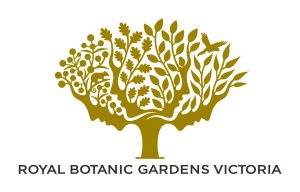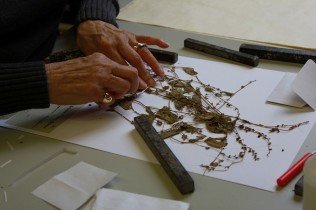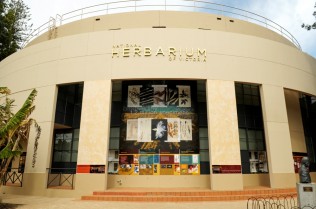
The Royal Botanic Gardens Victoria (RBGV) comprises two gardens. Melbourne Gardens was established in 1846 and covers more than 38 hectares. Today, the Melbourne Gardens is home to more than 52,000 individual plants, representing over 10,000 different species, in 26 Collections. It has also become a natural sanctuary for native wild life. One of the most recent developments is The Ian Potter Foundation Children’s Garden (Children’s Garden). This garden provides an interactive educational environment in which children of all ages, backgrounds, physical abilities and cultures are able to play, explore and discover the natural world.
The National Herbarium of Victoria (MEL) was established in 1853 by Baron Ferdinand von Mueller and is the oldest scientific research institution in Victoria. Mueller was responsible for describing and naming over 2,000 species of Australian plants. Apart from the extensive artwork and library rich in literature from the 1800s, the core of the collection is approximately 1.4 million herbarium specimens. The herbarium collection is approximately two-thirds Australian and one-third foreign and is rich in Australian and foreign type specimens. Herbarium records form the bulk of data supplied to the ALA.
 Established in 1970, the Cranbourne Gardens is dedicated to the conservation, display and enjoyment of Australian flora. Within an hour’s drive of Melbourne and covering 363 hectares, Cranbourne Gardens is a natural haven in a rapidly developing urban area. Two-thirds of the site is remnant vegetation of state and regional significance and is home to a number of endangered, vulnerable and ‘at risk’ species of fauna and flora. The new Australian Garden covers 15 hectares and provides a contemporary landscaped space showcasing native plants in settings that reflect the true essence of the Australian landscape
Established in 1970, the Cranbourne Gardens is dedicated to the conservation, display and enjoyment of Australian flora. Within an hour’s drive of Melbourne and covering 363 hectares, Cranbourne Gardens is a natural haven in a rapidly developing urban area. Two-thirds of the site is remnant vegetation of state and regional significance and is home to a number of endangered, vulnerable and ‘at risk’ species of fauna and flora. The new Australian Garden covers 15 hectares and provides a contemporary landscaped space showcasing native plants in settings that reflect the true essence of the Australian landscape
Living collections at both Melbourne and Cranbourne sites are held in a living collection database that will be added to the ALA data repository. Both the Melbourne and Cranbourne sites are managed by the Royal Botanic Gardens Board Victoria under the Royal Botanic Gardens Act 1991.
Two divisions of the RBGV are responsible for the majority of research.
 The Plant Sciences and Biodiversity Division manages the State Botanical Collection (the preserved plant collections of the National Herbarium of Victoria and the Library collections). Its staff undertake research programs and special projects, manage a plant identification and taxonomic enquiry service, and provide authoritative scientific advice. Projects include the Victorian Conservation Seedbank whose records are also made available through the ALA. The Herbarium is part of an international network of Herbaria and participates in collaborative projects nationally and internationally. The Division has two functional Branches – Collections and Plant Sciences.
The Plant Sciences and Biodiversity Division manages the State Botanical Collection (the preserved plant collections of the National Herbarium of Victoria and the Library collections). Its staff undertake research programs and special projects, manage a plant identification and taxonomic enquiry service, and provide authoritative scientific advice. Projects include the Victorian Conservation Seedbank whose records are also made available through the ALA. The Herbarium is part of an international network of Herbaria and participates in collaborative projects nationally and internationally. The Division has two functional Branches – Collections and Plant Sciences.
The Australian Research Centre for Urban Ecology (ARCUE) is a division of the Royal Botanic Gardens Melbourne. ARCUE is philanthropically funded by The Baker Foundation and also generates revenue through the provision of niche consultancy and collaborative research projects. ARCUE has office space in the School of Botany at The University of Melbourne. One of the aims of the centre is to undertake research into the effects of urbanisation on flora, fauna, and ecological processes in order to help increase our understanding of the ecology, restoration and management of urban and suburban areas throughout Australia and the world.
